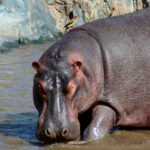SERENGETI NATIONAL PARK
Serengeti National Park is a well-known conservation area in northern Tanzania, East Africa. It is widely regarded as one of the world’s most iconic and diverse wildlife habitats. The park, which covers an area of approximately 14,750 square kilometers (5,700 square miles), was founded in 1951 and was later designated a UNESCO World Heritage Site in 1981.
The Serengeti habitat consists of large grassland plains, sparse woods, and seasonal rivers. It is most known for the yearly Great Migration, in which millions of wildebeest, zebras, and gazelles migrate across the plains in search of new grazing areas. This spectacle draws wildlife enthusiasts and photographers from all over the world.
The park is home to a diverse range of wildlife species, including the iconic African Big Five: elephants, lions, leopards, buffalos, and rhinoceroses.... Cheetahs, hyenas, giraffes, hippos, crocodiles, and a wide range of antelopes and bird species are also frequently seen.

From the broad grasslands of the Serengeti Plains to the rocky outcrops known as kopjes, acacia woodlands, and riverine forests, the Serengeti National Park has a diverse environment. This vast range of habitats supports a rich wildlife population and provides several chances for visitors to witness and appreciate the park’s extraordinary biodiversity through game drives, guided walks, and hot-air balloon safaris.
Serengeti National Park is culturally significant in addition to its biodiversity. It is home to various indigenous Maasai groups, which are noted for their traditional pastoralist lifestyle and unique cultural rituals. Visitors can interact with these communities and learn about their cultures and traditions.

Overall, the Serengeti National Park represents Africa’s natural beauty and wildlife protection initiatives. It continues to draw people looking for a true safari experience and the opportunity to view the great wonders of the African savannah.


